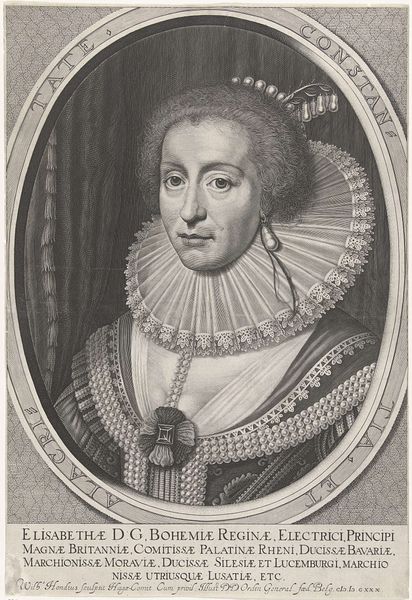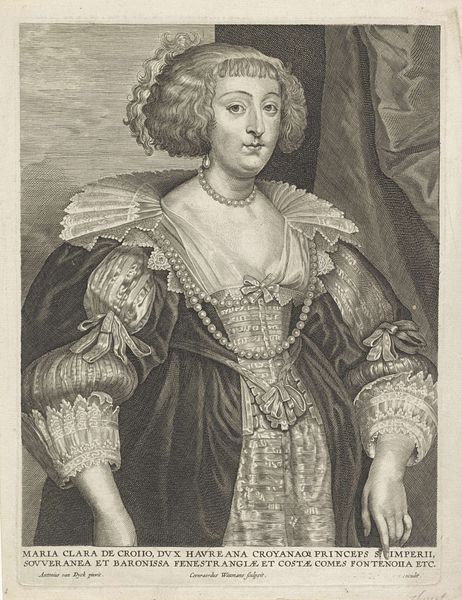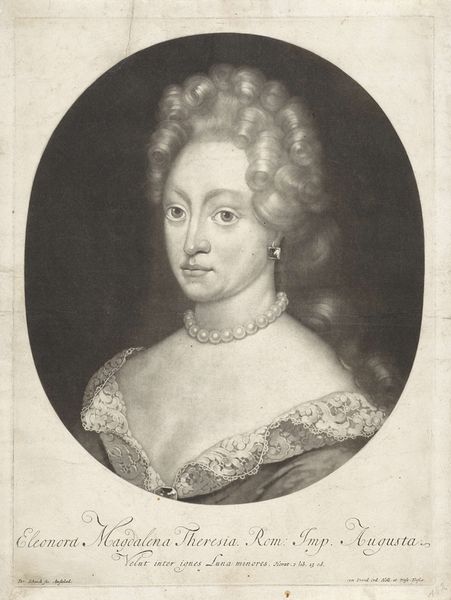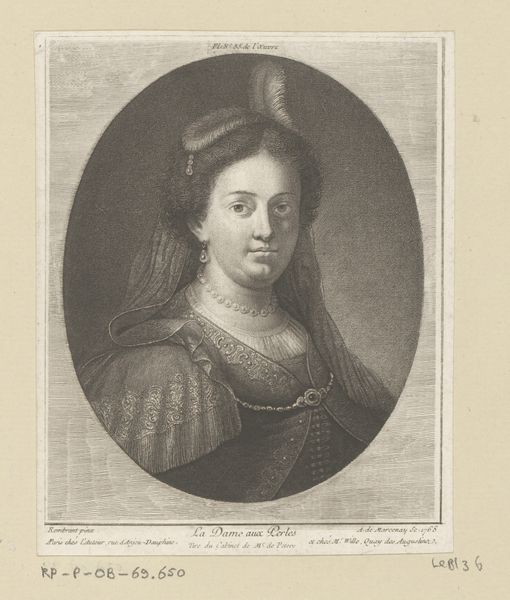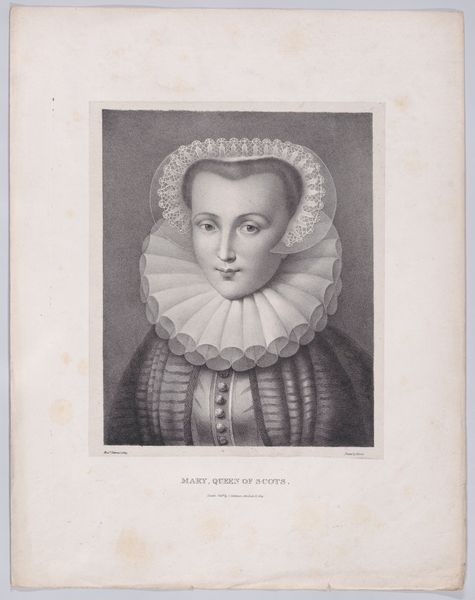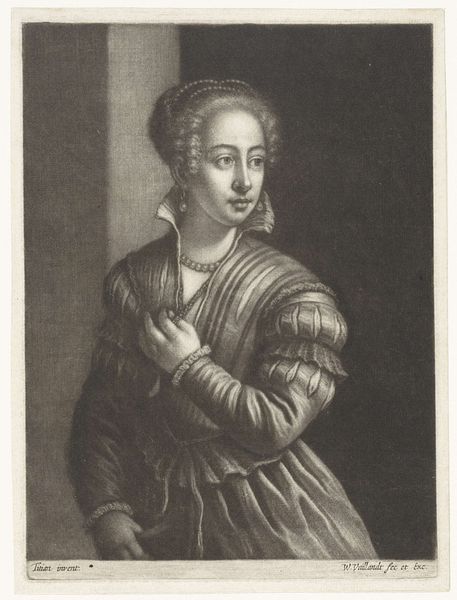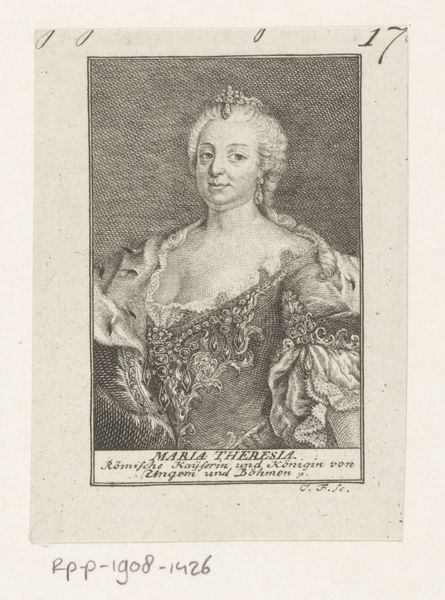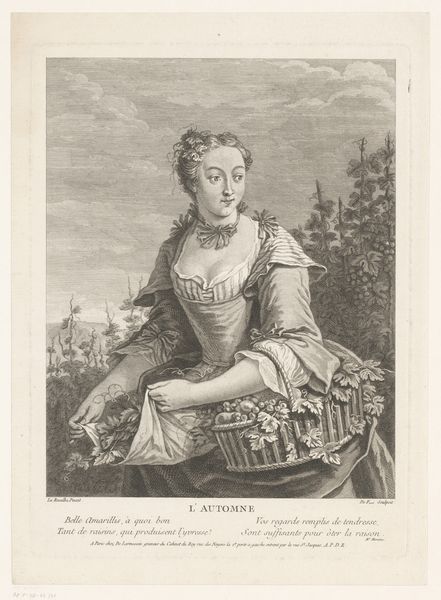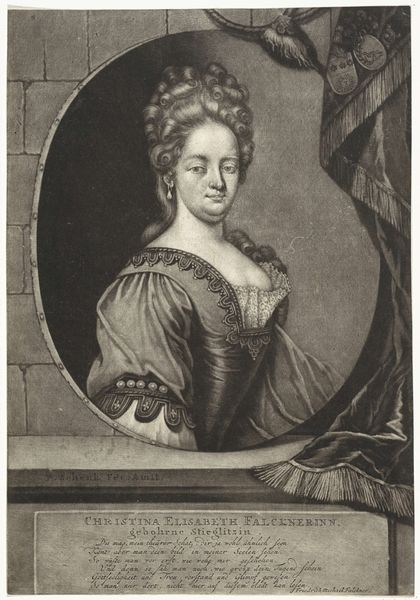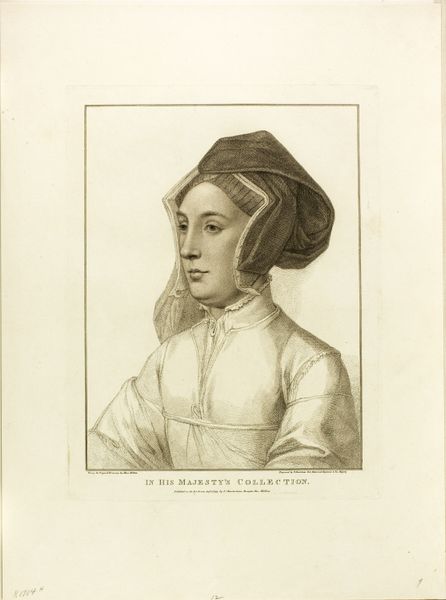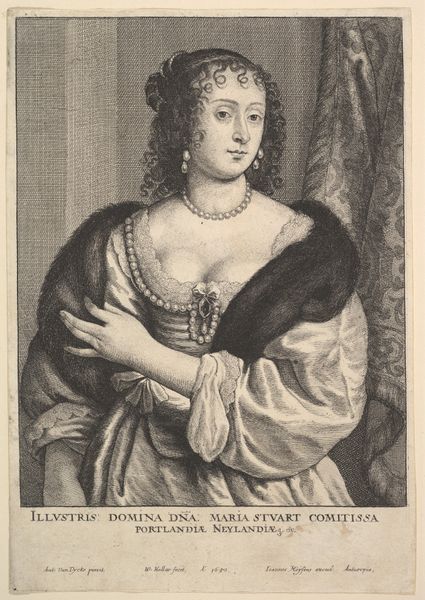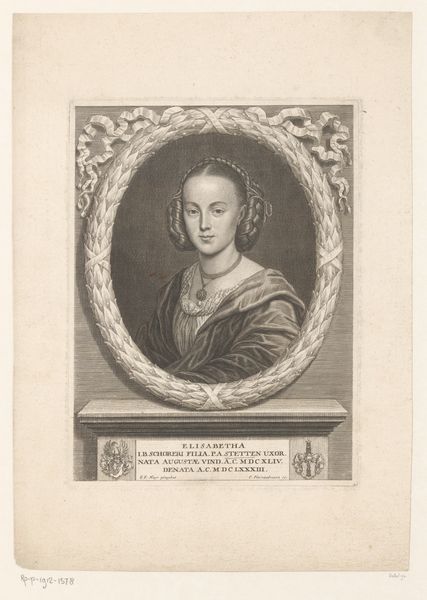
print, engraving
#
portrait
#
neoclacissism
# print
#
charcoal drawing
#
portrait reference
#
limited contrast and shading
#
portrait drawing
#
history-painting
#
engraving
Dimensions: height 366 mm, width 240 mm
Copyright: Rijks Museum: Open Domain
Curator: Looking at this rather severe engraving, what strikes you? Editor: Austerity, absolutely! And a palpable sense of authority. I'm intrigued and maybe a tad intimidated by this woman. There's such clarity and focus to the piece even though it looks…delicate, almost ethereal in its execution. Curator: Delicate indeed. The Rijksmuseum holds this print made in 1819. The artist Frederik Christiaan Bierweiler rendered it, naming it “Portret van Foelke Kampana.” It aligns with the neoclassical style and appears to reference a historical painting. The engraving captures Kampana's likeness, someone quite significant historically, no doubt. Editor: Oh, absolutely. That stark white lace framing her face like that demands attention. What sort of statement did the lace make then? It makes the figure stand out, like she’s ready to deliver some pronouncement! What do you suppose a person like Foelke represented for the communities viewing her portraits at the time? Curator: Excellent question. Remember, the period of Neoclassicism coincides with a rising merchant class who also sought images portraying their worth. As a leader during a tumultuous time in Frisian history, displaying Foelke Kampana's dignified resilience would inspire public pride. Editor: So this wasn't just art, it was…branding! Fascinating! But, returning to the artistic technique for a moment, I notice the portrait is marked by limited contrast and shading. What was the function? Did the lack of shading represent humility? Curator: Precisely. Highlighting stark class differences may have seemed unpalatable at the time. The relative uniformity of line, combined with the sharp geometry of dress would have conveyed strength of conviction rather than individual flamboyance. Editor: Hmmm. So, what was initially severe comes off controlled, even diplomatic in the broader sense. It is an interesting play between personality and political power. Curator: Indeed. Thinking about this engraving reveals so much more about art's role. Editor: It truly does!
Comments
No comments
Be the first to comment and join the conversation on the ultimate creative platform.
